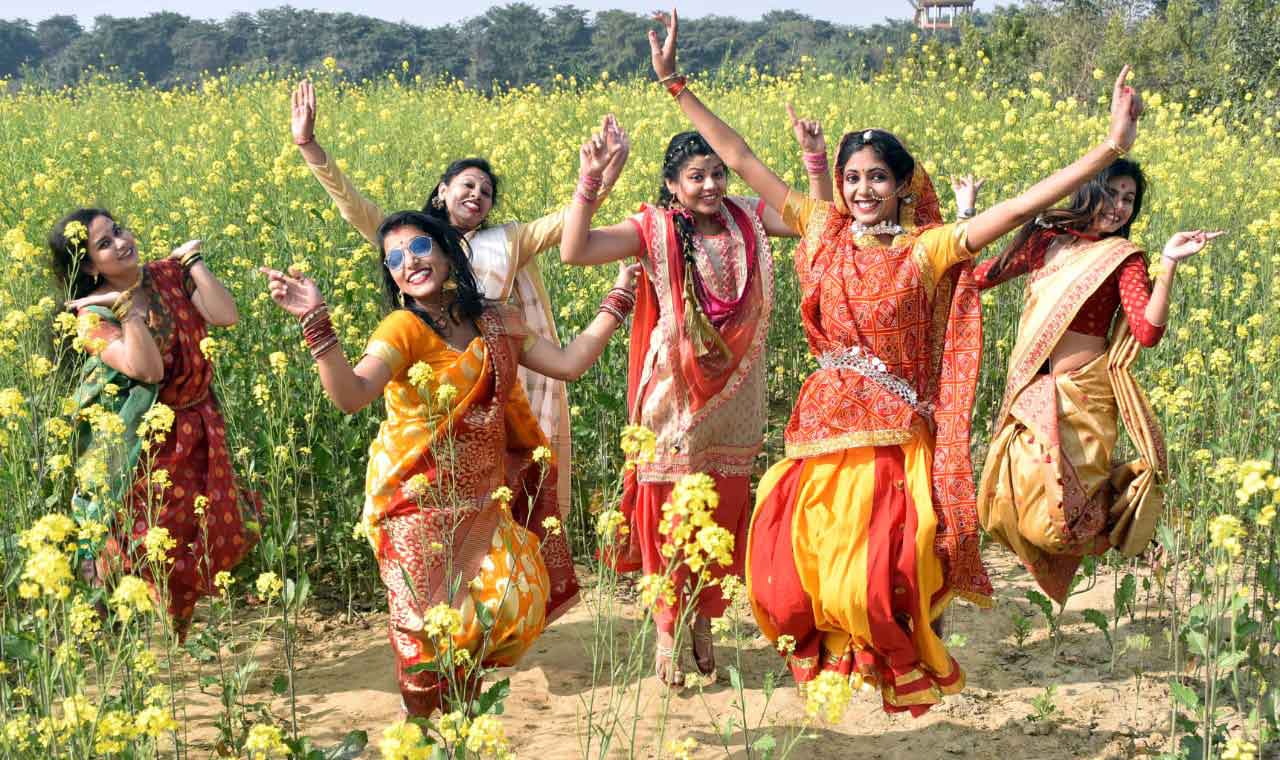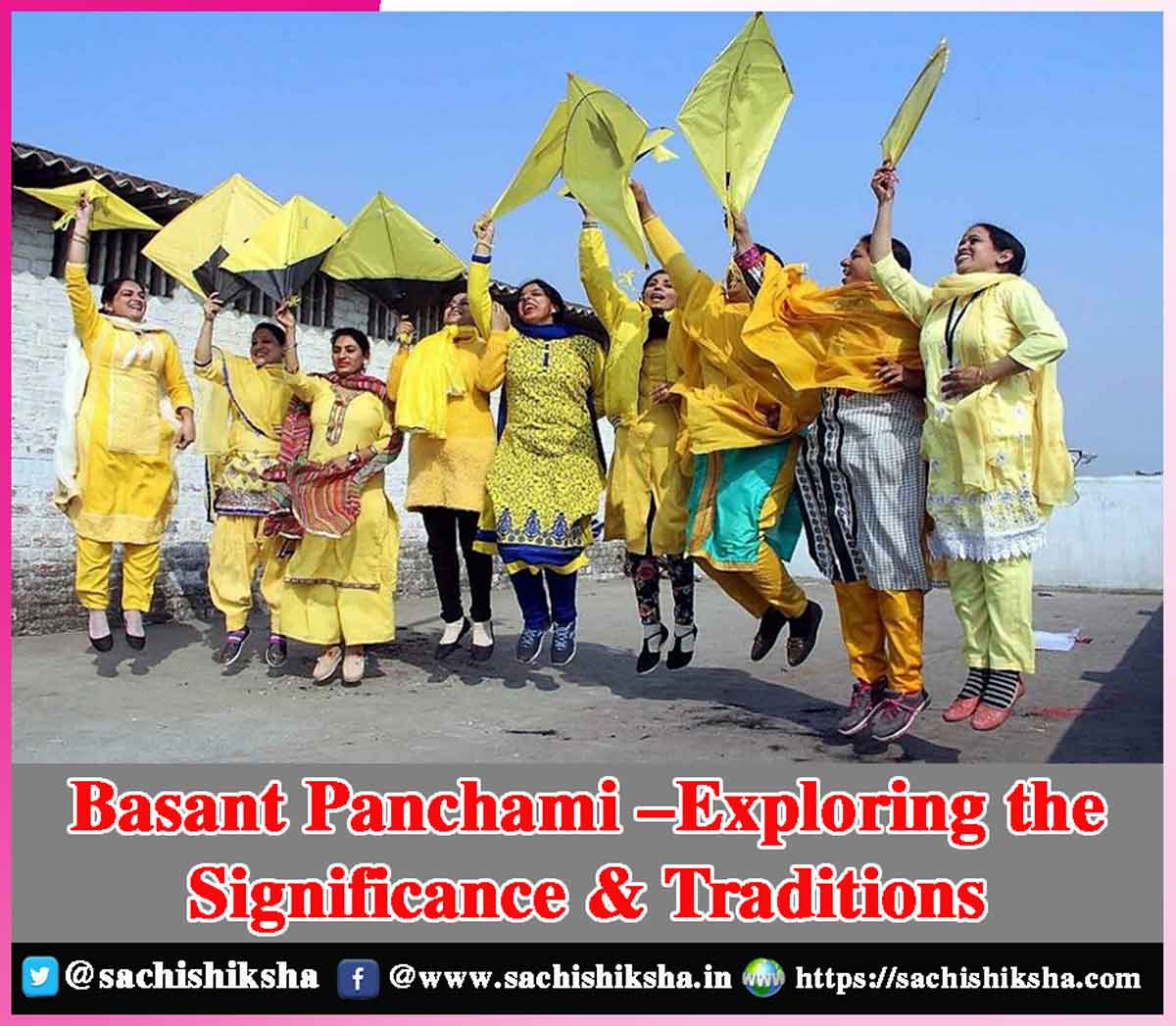Basant Panchami –Exploring the Significance & Traditions
Introduction: Indian festivities celebrate unity and peace. All of the joy and laughter is accompanied with wonderful meals, new clothes, and a little celebration. The spring season is a time of enjoyment for everyone, and this calls for Basant Panchami festivities. It is additionally known and observed as Saraswati Pooja in Eastern India.
Vasant Panchami, also known as Basant Panchami, honours the commencement of the shift from winter to spring. Following Makar Sankranti (January 14-15), the sun begins its northward trip from the tropic of Capricorn as the winter retreats, ushering in milder days. A lovely transition between the seasons marks the approach of spring, as the Indian Ocean breathes a sigh of comfort after the long, cold winter.
Table of Contents
Transition Phase:
Following a 30-day phase of transition beginning with Basant Panchami, spring blooms fully during Holi. Basant Panchami is observed on the fifth day of the brilliant lunar fortnight (Sukla Paksha) in the month of Magha, according to the Indian lunar calendar. This matches January and February in the Gregorian calendar.
Learning, Growth, and Imagination:

Sri Panchami is celebrated in southern India, with Sri representing one of Goddess Lakshmi’s avatars. Basant Panchami is also the day when Goddess Parvati dispatched Kama Deva to disrupt Lord Shiva’s devotion. This Basant Panchami celebration therefore has a connection with all three goddesses of the Hindu trinity. In simple terms, it is an occasion to honor learning, growth, and imagination.
The Saraswati River:
The Saraswati River was a historic river in the northwest region of India that dries up over time. When spring arrived, the Himalayan glaciers melted, augmenting the speed of flow of the Saraswati River. The mustard seeds that grew on the bank of the river used to be in full blossom, with yellow mustard blossoms covering the banks for several miles, creating for a beautiful spectacle. It is worth noting that the color yellow denotes wisdom in the Indian tradition. It’s the hue of spring.
Relevance of Yellow Colour:
In prehistoric times, The Rishis used to live in ashrams close to the Saraswati River. Sage Veda Vyasa also lived here. The Vedas, Upanishads, and much other literature were penned and collated along the banks of the Saraswati River. The river was so connected with Goddess Saraswati, a deity of wisdom and comprehension. On Basant Panchami, Goddess Saraswati is dressed in yellow, completing her connection to the celebration and the river. On this particular day, individuals dressed in yellow and exchange yellow-colored foods. Basant Panchami, a celebration dedicated to Goddess Saraswati, is also an occasion for honoring enlightenment because, according to certain customs, children get enrolled into school on this day.
Saraswati as Goddess of Creation:
Saraswati is also known as the goddess of creation. In the distant past, Basant Panchami marked the start of a month-long holiday called Basant Utsav, which concluded in Holi. As most of us observed, Basant Panchami occurs in February. The month that followed, February, was thought to be ideal for marriage. According to traditions, the gods wedded during this month. Shiva and Parvati got married around this time.
Basant Panchami Mythology:
Now, we’re going to take an overview tour of the well-known Basant Panchami mythology. Lord Shiva was once believed to be in profound meditation. Tarakasura had received a blessing stating that only Shiva’s son was able to end his existence. He started bringing devastation throughout the earth, empowered by the realization that Shiva had grown into a monk engaged in devotion for quite some time and was unlikely to tie the knot again following Sati’s burning herself.
In the meantime, Sati had been reborn as Parvati. Parvati had performed a hard devotion in order to please Lord Shiva. Yet Shiva remained unaffected. Parvati then sent Kama Deva (the deity of love) to awaken Shiva from his devotion. On Basant Panchami day, Kama Deva contacted Shiva and built an illusory fountain in Kailash to entice the Lord to take him away from penance. Shiva ultimately awakens, but he has reduced Kama Deva to ashes. He subsequently accepted Parvati as his future wife. Lord Kartikeya, Shiva and Parvati’s son, destroyed Tarakasura.
Basant Panchami Celebration in India:
Basant Panchami is celebrated in various ways throughout India, in addition to serving as a day dedicated to Saraswati Puja. In Punjab, Basant Ritu is known as the kite celebration. Individuals wear yellow and enjoy yellow rice. Sikhs adorn yellow turbans. Married couples in Maharashtra visits temples dressed in yellow on the festival of Basant Panchami following their marriage ceremony.
Folks in Rajasthan wear jasmine garlands on this particular day. Basant Panchami in Bihar saw the installation of an old monument of the Deo Sun divinity. This statue of the Sun god is cleansed and adorned as part of a daylong ceremony.
Significance for Sufi Muslims:
Basant Panchami carries enormous significance for Sufi Muslims. According to some Sufi legends, in the 13th century CE, famed Sufi artist Amir Khusrau of Delhi noticed Hindu women wearing yellow flowers on Basant Panchami. He then imparted the habit to the Sufis, and it is being followed today by Sufi Muslims of the Chishti discipline. Basant Panchami is also an occasion on which certain Sufi Muslims commemorate the burial place of Sufi saint Nizamuddin Abulia in Delhi.
Vidyarambham:
Those who adore Goddess Saraswati on Basant Panchami observe a ritual known as Vidyarambham (Vidya + Aarambam), which means the commencement of Vidya (education). The ceremony is also known as Aksharabhyasam (Akshar + Abhyasam), which means studying the alphabet of Akshar.
Celebration in Schools & Colleges:
Many educational institutions observe it as Saraswati Pooja, which is considered as a blessing of knowledge, skills, and abilities. Educational institutions such as schools and universities commemorate it with great enthusiasm. It is supposed to be Maa Saraswati day, and she is the goddess of wisdom and knowledge.
Students and teachers pray for her, and performances of music, dancing, and other events are planned for the day. This day has an important effect since it is preceded by an important belief that on this day, none of the books should be touched or studied because we are celebrating them.














































